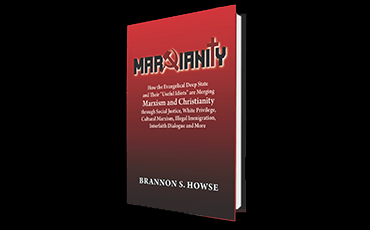Understanding The Supreme Court's Ten Commandments Case
Ten Commandments in <?xml:namespace prefix = st1 ns = "urn:schemas-microsoft-com:office:smarttags" />America<?xml:namespace prefix = o ns = "urn:schemas-microsoft-com:office:office" />
By Kerby Anderson
The Supreme Court has spoken and has essentially stuttered. How any sane person can make any sense of their two rulings on the Ten Commandments is beyond me. A divided court struck down displays in two Kentucky courthouses, but ruled a Ten Commandments monument on state government land in Texas was acceptable.
So why was a six foot granite monument on the grounds of the Texas Capitol constitutional? Perhaps they saw it acceptable because it is one of seventeen historical displays on the twenty-two-acre lot. So five justices determined it to be a constitutional tribute to the nation's legal and religious history.
On the other hand, what is unconstitutional are copies of the Ten Commandments in Kentucky courthouses hanging alongside documents such as the Bill of Rights, the Star-Spangled Banner, and a version of the Congressional Record declaring 1983 the "Year of the Bible." Anyone looking for a clear line of constitutionality will not find it in this confused muddle of court cases.
And anyone who doesn't think the members of the court are openly hostile to religion need only read just a few lines of the opinion rendered by Justice John Paul Stevens. He couldn't even accept the Texas Ten Commandments monument placed there over forty years ago by a secular institution. "The monument is not a work of art and does not refer to any event in the history of the state," he wrote. "The message transmitted by Texas' chosen display is quite plain: This state endorses the divine code of the Judeo-Christian God."
Fortunately, other justices noted that one monument among many others is hardly an endorsement. You can stop to read it, you can ignore it, or you can walk around it. Chief Justice William Rehnquist argued that the monument's placement on the grounds among secular monuments was "passive," rather than confrontational. But that logic seemed lost on many of the justices.
The Supreme Court's inconsistency in this case shows that many of the justices have clearly lost their way. Justice Antonin Scalia addressed the lack of any clear principle in this case in his scholarly dissent. He declared, "What distinguishes the rule of law from the dictatorship of a shifting Supreme Court majority is the absolutely indispensable requirement that judicial opinions be grounded in consistently applied principle."
In 1980, the Supreme Court ruled against the posting of the Ten Commandments in the public schools in the case of Stone v. Graham. They ruled that the "preeminent purpose for posting the Ten Commandments on schoolroom walls is plainly religious in nature." At least in 1980 we knew where the court stood on posting religious symbols in public places. This time they confused an already complex issue. According to Justice David Souter, the liberal justices were trying to establish "official religious neutrality."
Justice Scalia listed various ways in which higher beings are invoked in public life, from "so help me God" in inaugural oaths to the prayer that opens the Supreme Court's sessions. He asked, "With all of this reality (and much more) staring it in the face, how can the court possibly assert that the First Amendment mandates governmental neutrality?" Perhaps trying to mandate neutrality is the problem.
When we look at the Founding Fathers we see they were anything but "neutral" when it came to addressing the influence of the Ten Commandments on our republic. For example, twelve of the original thirteen colonies incorporated the entire Ten Commandments into their civil and criminal codes.[1]
John Quincy Adams stated, "The law given from Sinai was a civil and municipal [code] as well as a moral and religious code. These are laws essential to the existence of men in society and most of which have been enacted by every nation which ever professed any code of laws." He added that: "Vain indeed would be the search among the writings of [secular history] . . . to find so broad, so complete and so solid a basis of morality as this decalogue lays down."[2]
On September 19, 1796, in his Farewell Address, President George Washington said, "Of all the dispositions and habits which lead to political prosperity, Religion and Morality are indispensable supports."[3] William Holmes McGuffey, considered the "Schoolmaster of the Nation," once said, "The Ten Commandments and the teachings of Jesus are not only basic but plenary."[4]
It is more than just a little ironic that the Supreme Court that ruled against posting the Ten Commandments in public places actually has its own display of the Ten Commandments. Engraved in the stone above the head of the Chief Justice are the Ten Commandments with the great American eagle protecting them. Moses is included among the great lawgivers in the sculpture relief on the east portico. And sessions begin with the invocation, "God save the United States and this honorable court."
So what can Christians do? First, we should be in prayer about this important issue and pray for future Supreme Court justices who will someday replace those who made these rulings.
Second, we should express our opinions by talking to friends, writing a letter to the editor, and educating people around us about the importance of the Ten Commandments in America.
Third, we should encourage Congress to pass the Constitutional Restoration Act which uses Article III, Section 2 of the Constitution to limit the appellate jurisdiction of the federal courts in areas like the Pledge of Allegiance and the Ten Commandments. Congress has the power to remove power from judges.
Judges who use their power to remove the Ten Commandments should have their power removed from them. Passing this legislation will accomplish that purpose.
[1] Matthew Staver, "The Ten Commandments Battle Continues To Gain Steam," National Liberty Journal, December 2001.
[2] John Quincy Adams, Letters of John Quincy Adams, to His Son, on the Bible and Its Teachings (Auburn: James M. Alden, 1850), 61.
[3] George Washington, Farewell Address (Philadelphia), September 17, 1796.
[4] William Holmes McGuffey, Eclectic Reader in D. James Kenney, "What's Happening to American Education" in Robert Flood, The Rebirth of America (Philadelphia: Arthur S. DeMoss Foundation, 1986), 122.
Support Our Broadcast Network
Trending Stories
Latest
We're a 100% Listener Supported Network
3 Simple Ways to Support WVW Foundation
Make Monthly Donations
-or-
A One-Time Donation
-
Mail In Your Donation
Worldview Weekend Foundation
PO BOX 1690
Collierville, TN, 38027 USA -
Donate by Phone
901-825-0652
















